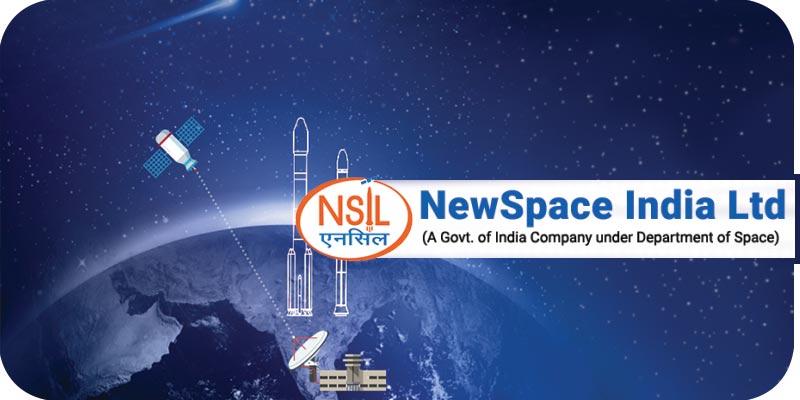- India
- Jan 05
What is the role of NSIL?
• NewSpace India Limited (NSIL) announced that the Indian Space Research Organisation (ISRO) will launch a 4.7 tonne communications satellite onboard SpaceX’s Falcon-9 rocket in the second quarter of this year.
• The GSAT-20 communications satellite is aimed at meeting the country’s broadband, in-flight and maritime communications (IFMC) and cellular backhaul services needs.
• The GSAT-20, which will be renamed as GSAT-N2, will have Ka-Ka band high throughput satellite (HTS) capacity with 32 beams having pan-India coverage, including Andaman and Nicobar Islands and Lakshadweep.
• GSAT-20 weighing 4,700 kg offers HTS capacity of nearly 48 gbps. The satellite has been specifically designed to meet the demanding service needs of remote/unconnected regions.
• ISRO’s heavy satellite launch rocket GSLV-Mk3 is capable of putting into orbit 4,000 kg payloads in Geosynchronous Transfer Orbit (GTO), forcing the space agency to seek the launch services of Falcon 9 rocket from the SpaceX stable.
• SpaceX’s Falcon-9 is capable of placing 8,300 kg payloads into Geosynchronous Transfer Orbit (GTO).
• Till now, ISRO has been using the services of French company Arianespace for launching heavier satellites.
• ISRO is now developing the Next Generation Launch Vehicle (NGLV) which will have the capability to put a 10,000 kg payload in GTO.
• Falcon 9 is a reusable, two-stage rocket designed and manufactured by SpaceX for the reliable and safe transport of people and payloads into Earth orbit and beyond.
• Falcon 9 is the world’s first orbital class reusable rocket. Reusability allows SpaceX to refly the most expensive parts of the rocket, which in turn drives down the cost of space access.
NewSpace India Limited
• The NewSpace India Limited (NSIL), a central public sector enterprise (CPSE), under the administrative control of the department of space (DOS) was established on March 6, 2019.
• NSIL is the commercial arm of ISRO with the primary responsibility of enabling Indian industries to take up high technology space related activities.
• It was set up to meet the ever-increasing demands of the Indian space programme and to commercially exploit the emerging global space market.
• In June 2020, the government enhanced the role and scope of NSIL to encompass more responsibilities in the primary business areas and widen the scope in June 2020.
The revised mandate broadly covers:
i) Owning satellites for earth observation and communication applications.
ii) Providing space-based earth observation and communication services.
iii) Building satellites and launching them as per demand.
iv) Building launch vehicles through Indian industry and launch as per requirements.
v) Providing launch services.
iv) Technology transfer to Indian Industry.
• As part of space sector reforms announced by the government, NSIL was mandated to build, launch, own and operate satellites in “demand-driven mode” for meeting service needs of the user.
• As part of this, NSIL successfully undertook its first demand-driven satellite mission — GSAT-24 — in June 2022, in which the capacity onboard the satellite was fully secured by M/s TataPlay.
• GSAT-24 mission was fully funded by NSIL.
• Presently, NSIL owns and operates 11 communication satellites in orbit.
Manorama Yearbook app is now available on Google Play Store and iOS App Store

